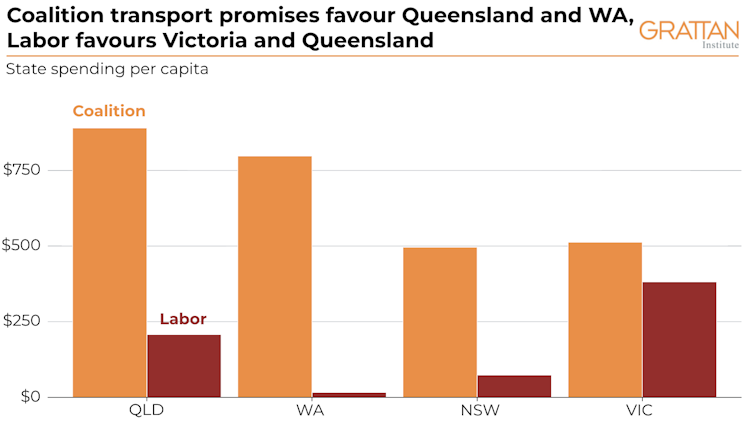Roundabouts and car parks? The major parties are promising much on transport, but they should stick to their jobs
- Written by Marion Terrill, Transport and Cities Program Director, Grattan Institute

In the seat-by-seat slugfest that is the federal election, transport infrastructure is once again at the forefront. Small, hyper-local projects are a favourite of both major parties this time around. That’s even though small local projects, such as roundabouts and carparks, simply aren’t the job of the federal government, and in practice often go badly.
A better deal for taxpayers would be for whichever party wins government on Saturday to halt this spending on small local infrastructure, and focus instead on nationally significant projects that have been properly assessed by Infrastructure Australia.
There’s a big difference in what the parties are promising. The Coalition has committed an exuberant $18.1 billion worth[1]; Labor a much more restrained $4.7 billion[2]. In both cases, these transport promises are a pale shadow of the 2019 campaign[3], when the Coalition promised $42 billion worth, and Labor an eyewatering $49 billion.

















